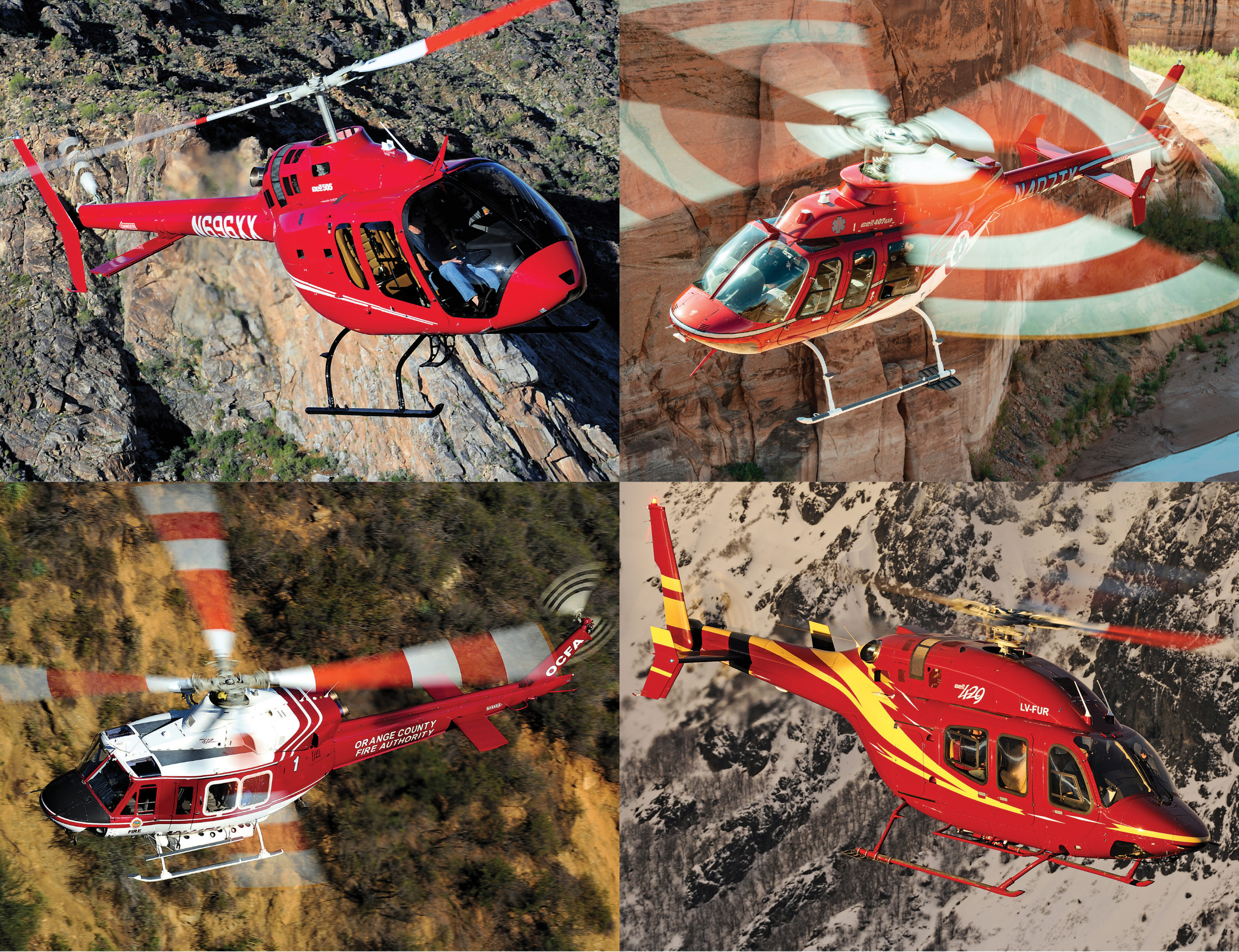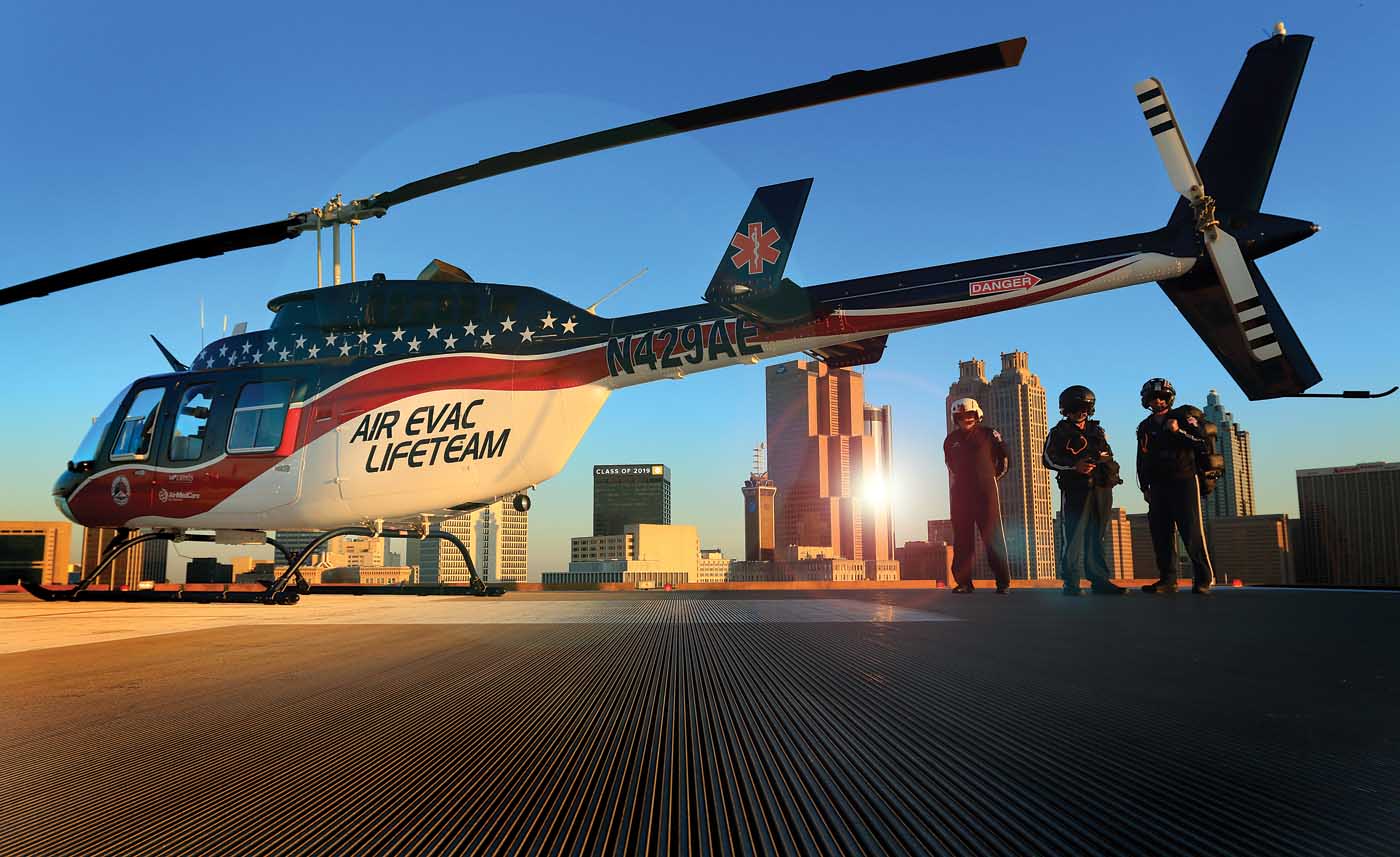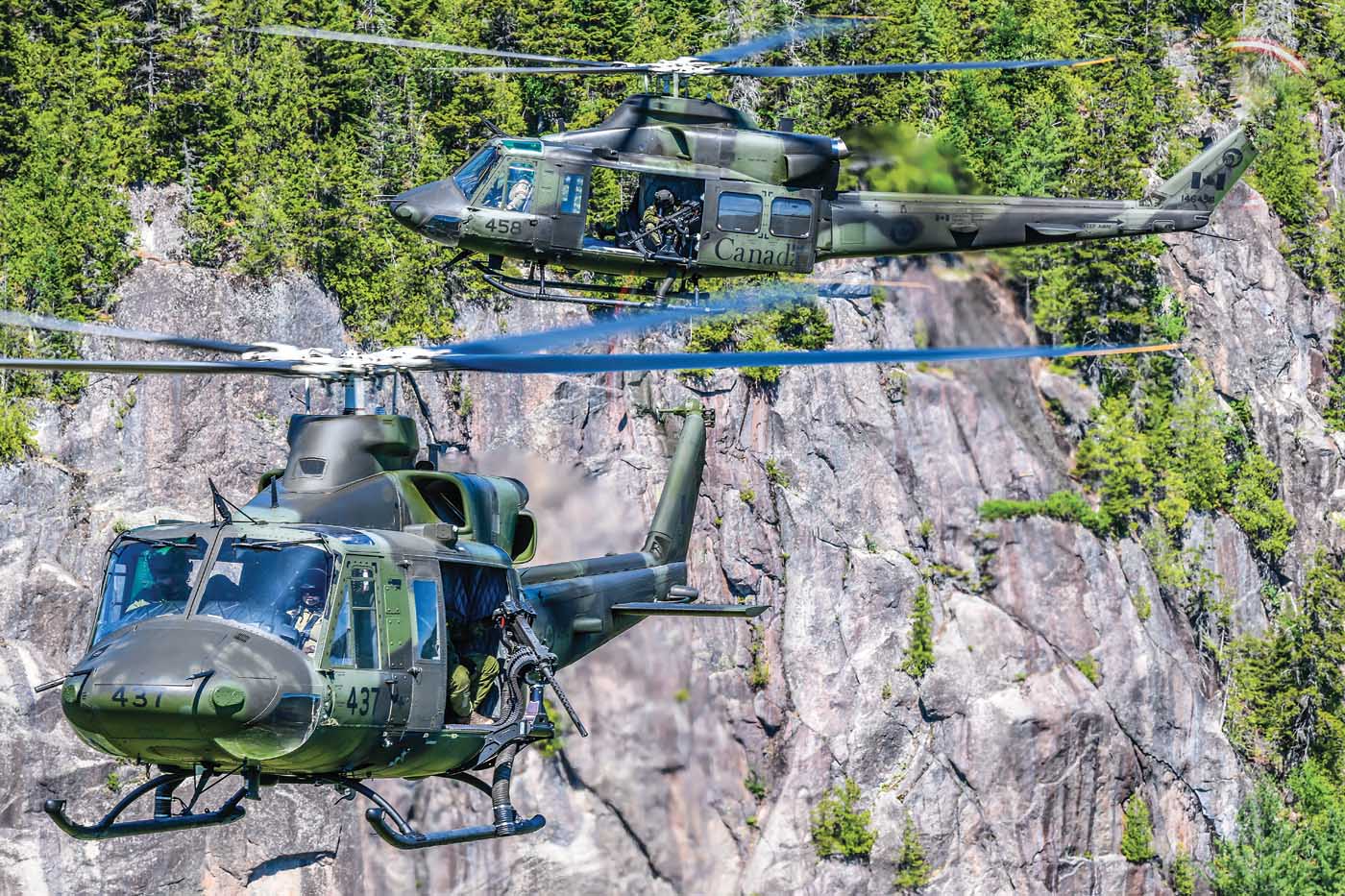At first glance, Quebec and Texas might not seem like the most natural partners. La Belle Province and the Lone Star State don’t appear, on the surface, to have much in common, other than a uniquely distinctive culture and outlook, one that often sets them apart from their near neighbors, let alone those from another country. But the two do share a proud aviation history, and each is, today, home to a flourishing aerospace hub: in the Montreal and Dallas-Fort Worth regions, respectively.

There are several companies with a foot in each one, but perhaps none have done so quite as successfully as Bell. Established by Larry Bell in the border city of Buffalo, New York, in 1935, the company made the move to Texas in 1951.
After decades of success as one of the industry’s original airframe manufacturers, Bell established its presence in Mirabel on Sept. 29, 1986, following an agreement with the Quebec and Canadian governments for financial support. It was a manufacturing facility at the time, spanning 436,000 square feet (40,500 square meters) on 151 acres of land.
The facility has gradually expanded over the years to now cover over 650,000 square feet alongside Mirabel airport, about 25 miles (40 kilometers) northwest of downtown Montreal. Such is the flow of helicopter traffic at the facility that it has its own control tower that looks out over its flight line of 17 helipads and two runways.
Over the past 34 years, more than 5,000 helicopters have rolled off its production lines, and today, it contains the final assembly lines (FALs) for the light single 505 Jet Ranger X, intermediate 407, light twin 429, and medium 412. This represents the entirety of Bell’s current in-production commercial product line. The facility also performs customization, engineering, type certification flights, support and services, and composite manufacturing.
“It’s the only site where almost everything is vertically integrated,” said Steeve Lavoie, who has been CEO and president of the Mirabel facility since May 2019. “From design, to manufacture, production, customization, painting, and delivery, everything can be done here. It’s the only [Bell] site that can do all this. We have a broad spectrum of capabilities.”
The facility was initially slated to produce variants of the Model 400 TwinRanger (a twin-engine version of the 206L LongRanger), but benefitted from Bell’s decision to split its helicopter business in 1986. Production of all its commercial lines was to be moved to Mirabel, while the manufacture of its military products would remain in Texas.
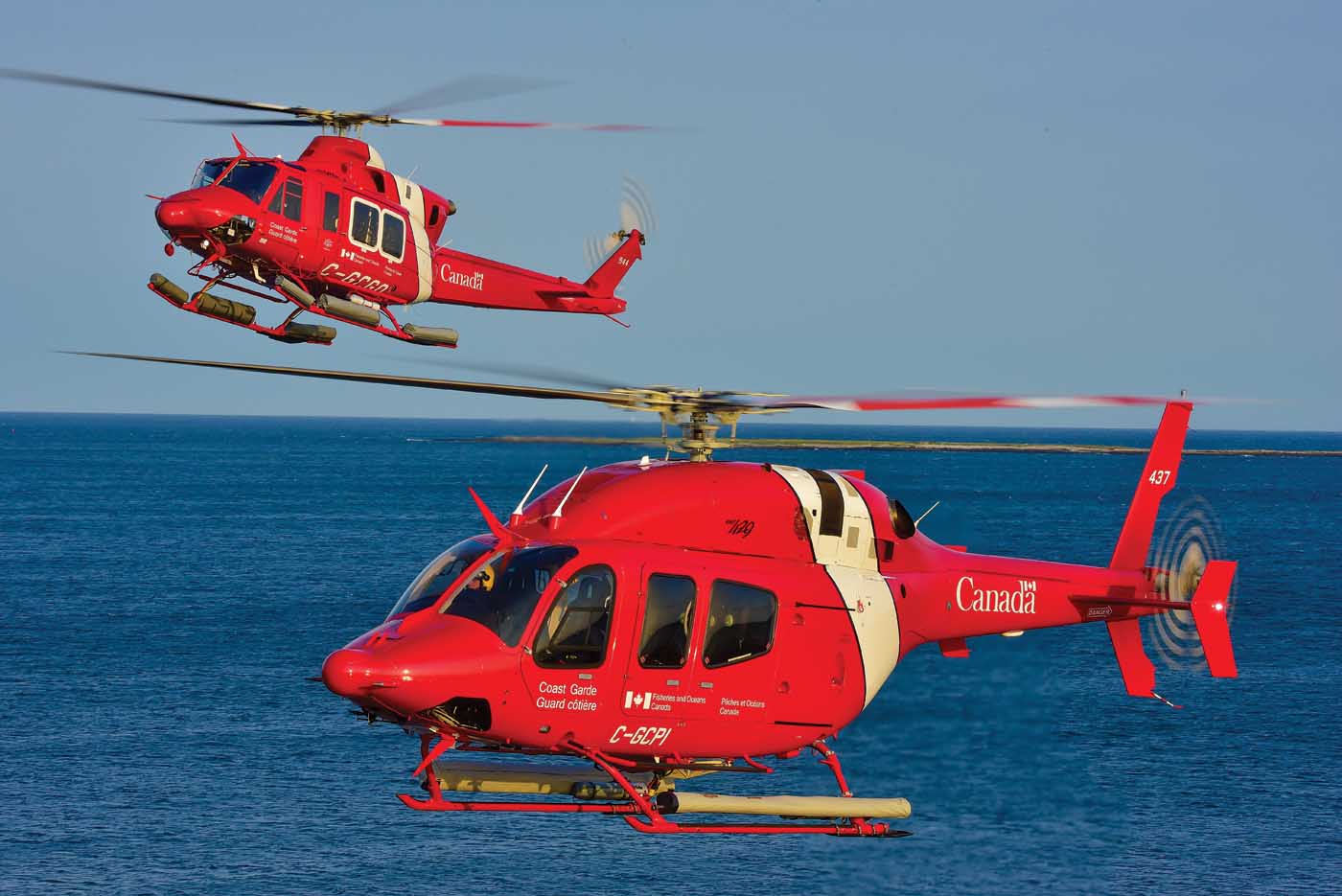
The first helicopter assembled at Mirabel was a 206B JetRanger, which was the best-selling light single-engine helicopter in the world at the time. Other notable first builds over the following years included the 206L-3 LongRanger (1987), 212 (1988), and 412 (1989).
Annual production grew above 200 for the first time in 1991, and the following year, Bell secured a huge contract from the Canadian government for 100 CH-146 Griffon helicopters (based on the 412EP) for the Canadian Armed Forces.
In March 1992, the facility recorded its first type certificate approval, with Transport Canada certifying the 230 — a light twin-engine aircraft developed from the Bell 222.
The 1,000th Canadian-built Bell helicopter rolled off the Mirabel production line in 1994, and by this point, the facility was producing about one-third of the commercial turbine helicopters being sold worldwide. The year also saw the launch of two new types: the 407 and the 430.
The 407 is a derivative of the 206L-4 LongRanger, bringing that airframe together with the four-bladed soft-in-plane main rotor developed for the U.S. Army’s OH-58D Kiowa Warrior. The aircraft was designed, developed, tested and certified in Mirabel; it recorded its first flight at the plant in June 1995, gained certification from Transport Canada in February 1996 (Federal Aviation Administration approval followed later that month); and the first of the type was delivered later in the year. The 407 has proven to be a huge success for Bell, with over 1,500 delivered since 1996.
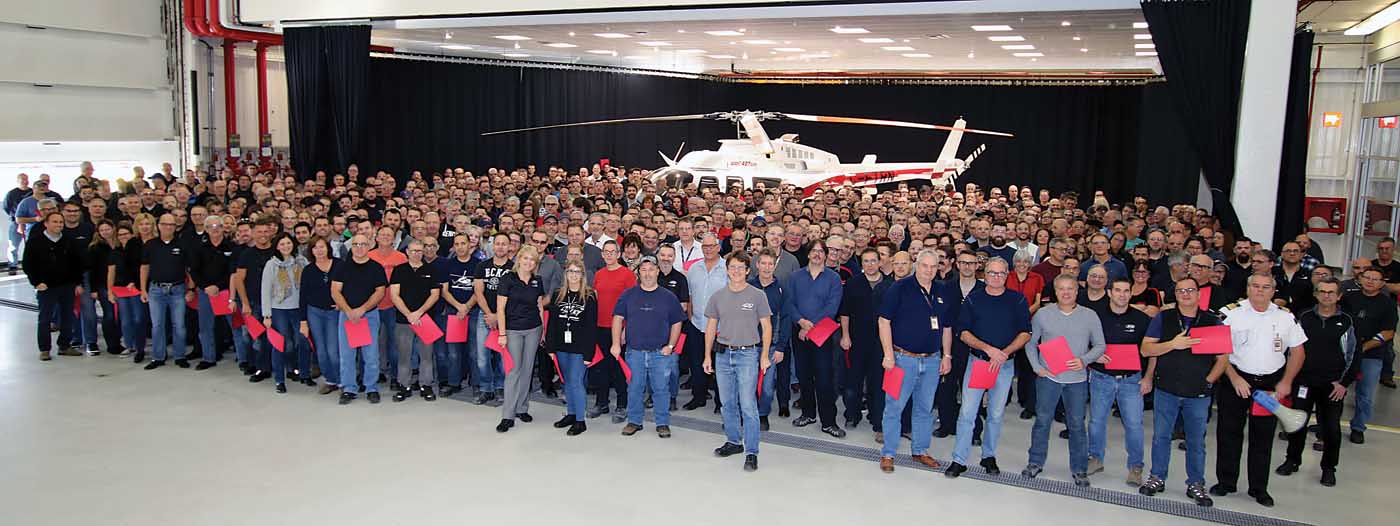
The 430, a four-bladed evolution of the 230, also went through the various stages of its development in Mirabel, receiving certification from Transport Canada shortly after the 407 in February 1996.
Another notable aircraft developed at the facility was the 427 (a twin-engine aircraft based on the 407), which would later give way to the 429 GlobalRanger. The latter, originally envisioned as a stretched version of the 427, ultimately employed a clean-sheet approach, with a modular airframe concept, extensive use of composites, a large cabin with clamshell doors, advanced rotor blade design, a glass cockpit, and was certified for single pilot instrument flight rules (IFR) operation.
The 429 first flew at Mirabel in February 2007, and received certification from Transport Canada and the Federal Aviation Administration (FAA) in July 2009. The first delivery took place almost immediately following certification, with Air Methods (for Mercy One) taking receipt of the landmark aircraft.
Commercial production
Today, the 429 is one of four types produced at the Mirabel facility, along with the 407GXi and 412EPI (the latest versions of the storied types), and Bell’s new light single 505 Jet Ranger X.
Bell first revealed the 412EPI at Heli-Expo 2013 in Las Vegas, Nevada. The aircraft features enhanced performance with Pratt & Whitney PT6-9 Twin Pac engines, and has upgraded avionics in the form of the integrated Bell BasiX Pro, which provides single-pilot IFR capabilities and incorporates the Garmin GTN 750 touchscreen navigators with four 10.4-inch (26.4-centimeter) LCD displays. Deliveries of the new variant began in 2013.
Another evolution of the 412 — the 412EPX — has been launched in partnership with Subaru, and will be the platform for the new utility helicopter for the Japanese Ministry of Defence. The aircraft features a more robust main rotor gearbox dry run capability, an increased internal maximum gross weight, and increased mast torque output below 60 knots.
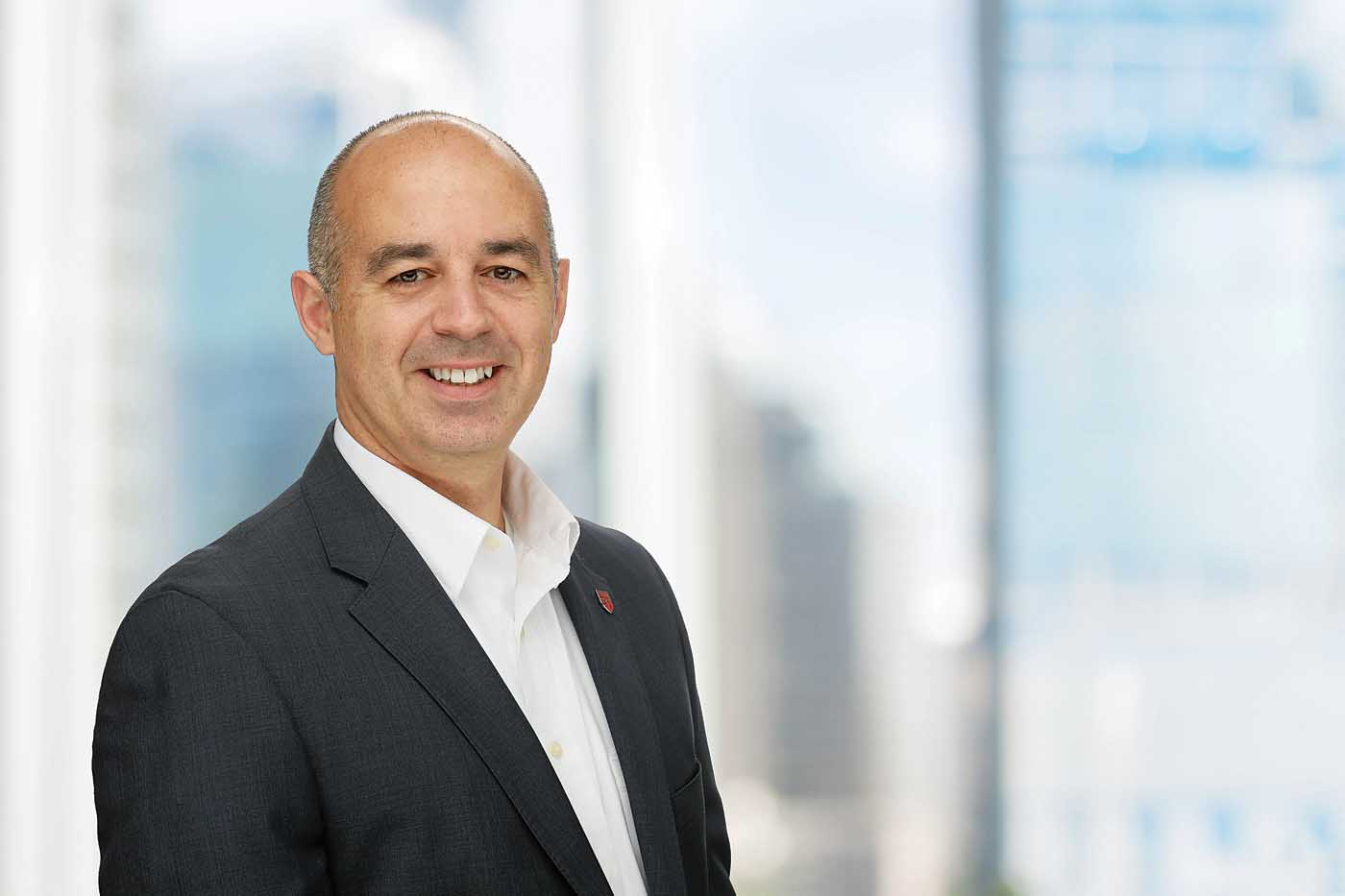
The 407GXi was announced in 2018, with first deliveries beginning later that year. An evolution of the 407GXP, which provided enhanced “hot and high” performance, the GXi has upgraded Rolls-Royce M250-C47E/4 engines with dual channel FADEC, providing enhanced redundancy and improved range and fuel consumption. It also features Garmin’s G1000H NXi integrated flight deck for cutting-edge avionics.
The newest entrant to the Bell production fleet is the 505, which was announced in low-key fashion during the Paris Airshow in June 2013. Powered by a single Safran Helicopter Engines Arrius 2R engine, the 505 fills the void in Bell’s product line that was created when the Bell 206B JetRanger ceased production in 2010. The 505 has a useful load of 1,500 pounds (680 kilograms), a range of 340 nautical miles (630 kilometers), and has been certified at a maximum cruise speed of 126 knots.
It features the Garmin G1000H integrated avionics suite with dual 10.4-inch displays, and uses the same rotor system as the 206L-4 LongRanger — retaining that type’s autorotational characteristics.
The five-seat aircraft, which aims to build off the legacy of success established by the Bell 206B JetRanger in the light single-engine market segment, was originally to be producted in a brand new 82,000-square-foot facility in Lafayette, Louisiana. However, in May 2016, less than a year after it opened, Bell decided to bring production of the short light single up to Mirabel.
The move came at a time when the general industry downturn had forced Bell to make sweeping cuts to its workforce around the world. There were around 2,200 people working at the facility in Mirabel in 2010, but by 2016, just 900 remained.
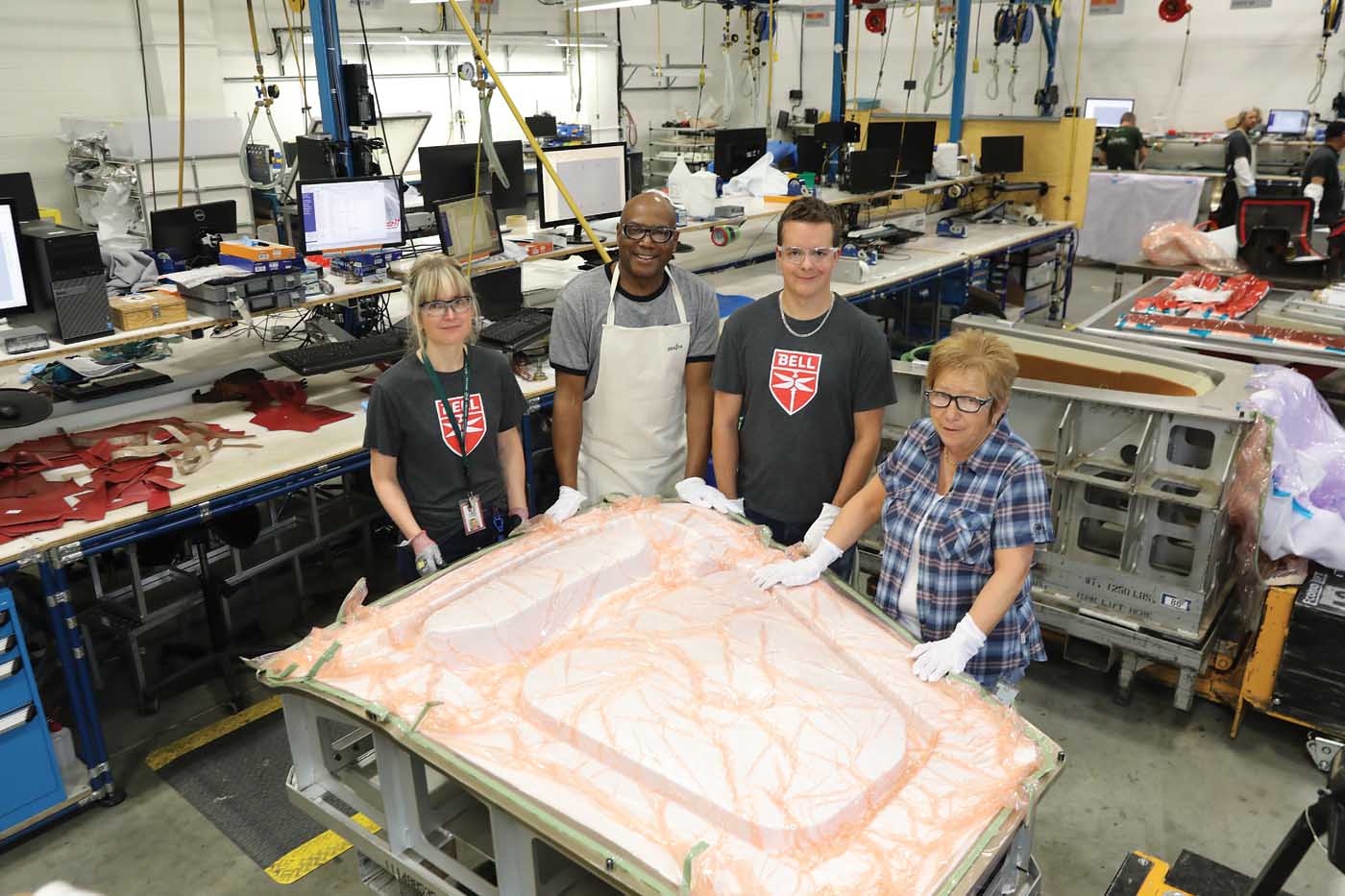
“I saw people crying [when the 505 production move was announced] because they were so happy to have good news about something,” said Francis Tessier, senior manager of manufacturing. “But it came with a lot of challenges, because they decided they would transfer the line right away.”
The facility was already intimately familiar with the type, having been the base for its development and testing; the 505 had completed its first flight in Mirabel in November 2014, and the aircraft received type certification from Transport Canada in December 2016. This was followed by production certification in February 2017, with the first customer delivery — to private operator Scott Urschel, based in Chandler, Arizona — in March at HAI Heli-Expo 2017 in Dallas. FAA approval followed in June 2017.
“The challenge we were having with the 505 was the [required] pace of production,” said Tessier, noting the over 300 letters of intent the aircraft had received before it was certified. “We were still in the industrialization phase, in the learning curve, and we had to ramp up pretty fast. Last year we were able to produce an aircraft every 1.5 days. It was amazing to see how we did that in less than two years.”
The global 505 fleet passed 20,000 flight hours in August 2019, with more than 215 deliveries completed to customers around the globe.
While all Bell’s current production helicopters are built in Mirabel, that will change once its upcoming 525 Relentless super medium is certified. Unveiled at Heli-Expo 2012 in Dallas, the 20,500-lb. (9,300-kg) gross weight 525 Relentless will become the first commercial fly-by-wire helicopter when it is certified, competing against the likes of the Airbus H175 and Leonardo AW189 in the super medium category. The engine powering the aircraft — the General Electric CT7-2F1 — was certified by the FAA in March 2019, but Bell has not released a date for anticipated regulatory approval of the aircraft itself (see p.32).
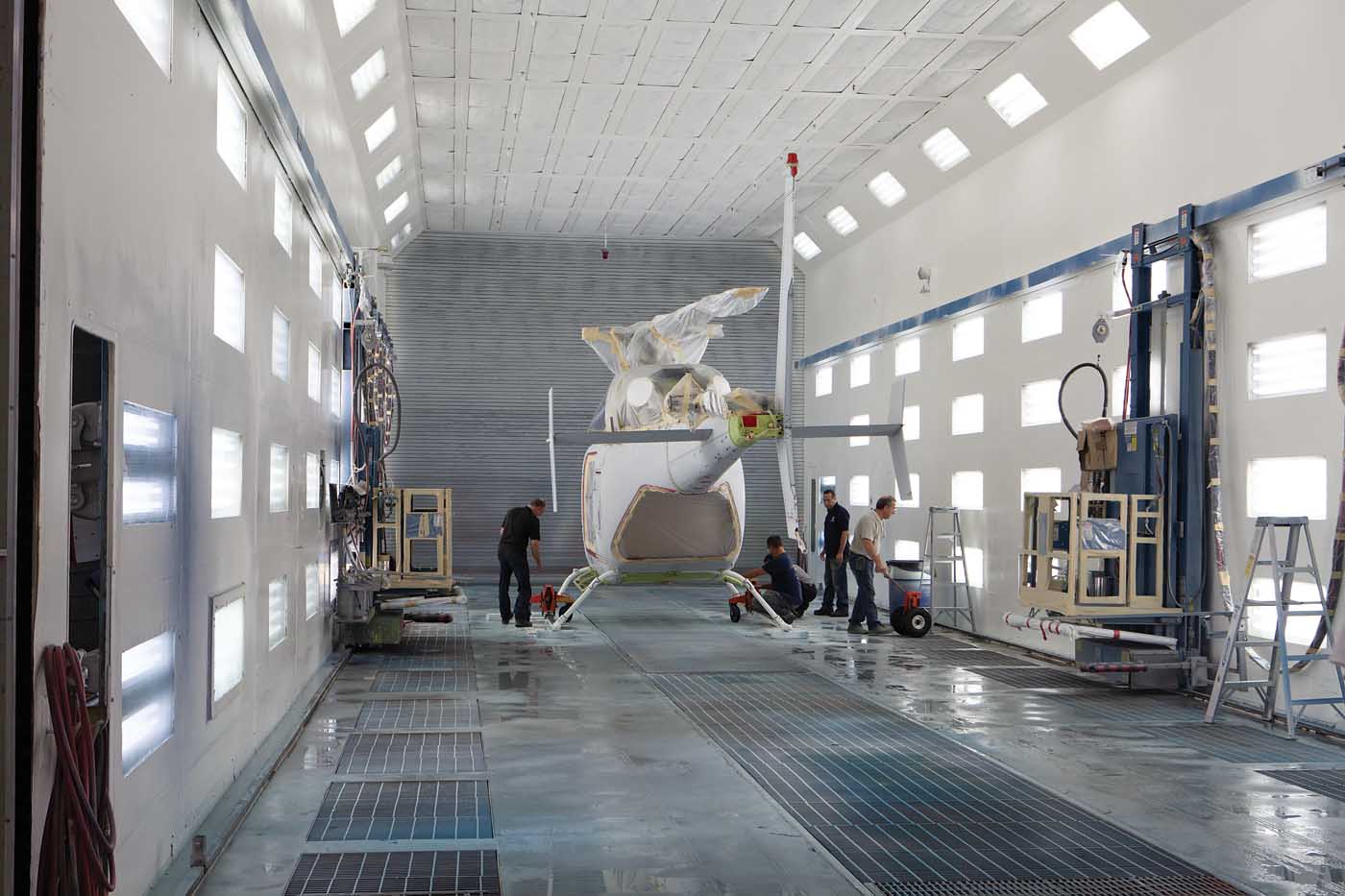
The Mirabel facility has been involved in the aircraft’s development, with the structure designed by its engineers, as well as providing composite parts for the first prototype aircraft and hosting flight tests.
Practical reasons lay behind the decision to locate the 525’s production line in Amarillo, Texas, explained Tessier. “The 525 doesn’t fit in this facility — we would have to expand our building to be able to produce it. In Amarillo they have the room for it.”
On the assembly floor
The manufacturing work in Mirabel is split into three divisions: final assembly and flight tests; customization work; and composite creation.
The FALs sit either side of a wide central aisle, with the workflow bringing the aircraft towards the center as they are completed. They are then taken down the aisle to the completions section of the facility next door.
“All the different products have different strategies in terms of how they are manufactured,” Luc Bachant, director of manufacturing in Mirabel, told Vertical during a recent visit to the facility. The 412, for example, is the only product that still has its structural assembly completed in Mirabel. The aircraft’s various components are first spliced together in a large fixture, and then other elements, such as the wiring harness, are installed at each subsequent station. It requires about 4,000 hours of work to bring a basic 412 through the FAL and to complete flight operations at Mirabel, he said — a workload that could be doubled with particularly complex completions, such as that required for the Canadian Coast Guard’s new fleet of seven 412EPIs.
The 505, on the other hand, arrives at the plant in the form of a complete cabin structure from an external supplier. It follows a U-shaped production line, and Bell has the ability to install some kits into the aircraft as it is assembled, making its progress to delivery that much more efficient. Each aircraft typically spends a month on the FAL, said Bachant, with one aircraft finished every 1.5 days.
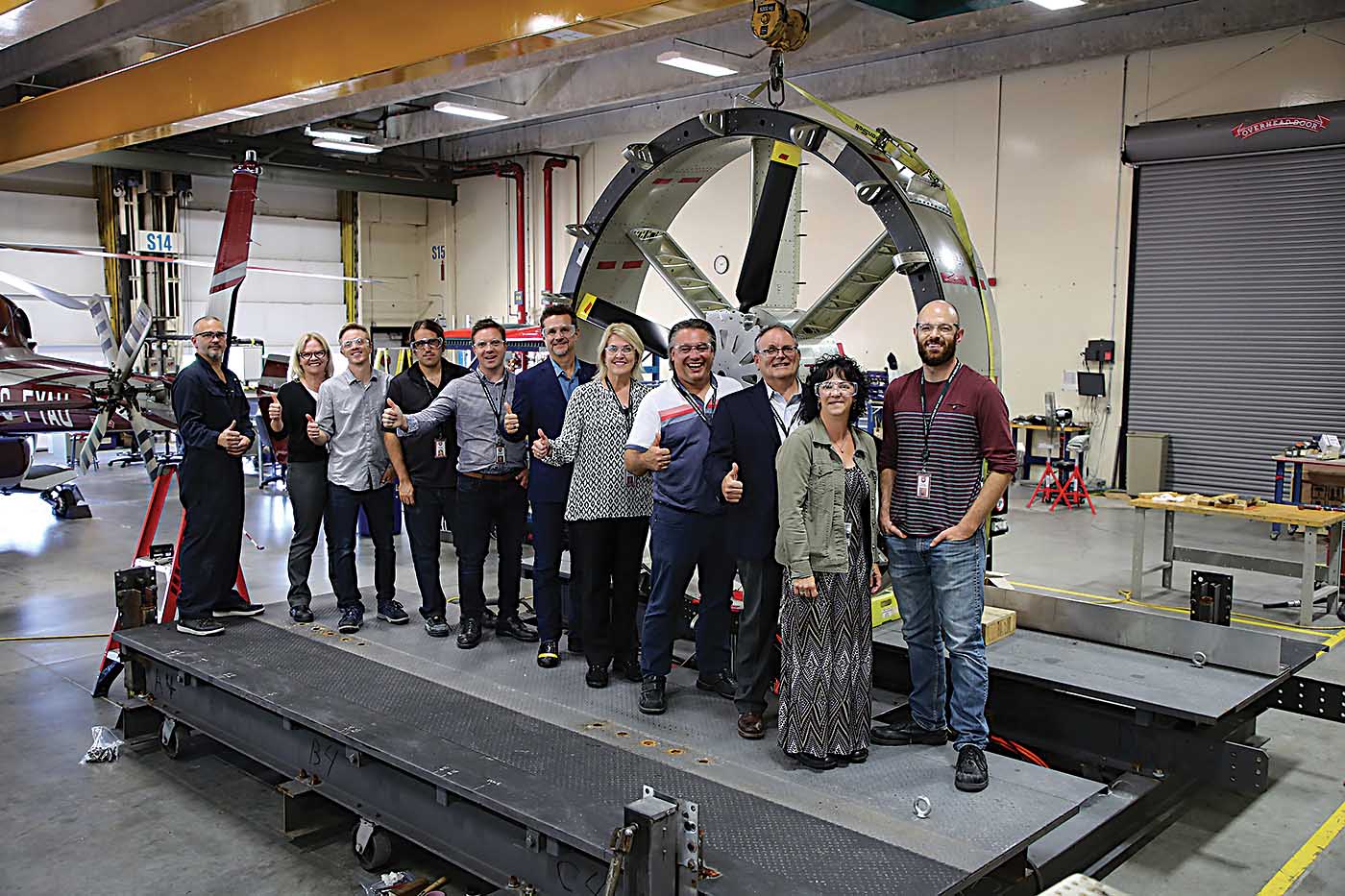
In terms of manufacturing, Bachant said the biggest challenge was the flow of components from suppliers. “The flow of parts sometimes can be an issue because some suppliers have some capacity constraints, especially as the industry is picking up,” he said. “We have a base of close to 800 different suppliers. When you are creating an aircraft with so many different components, a delay with just one can stop everything.”
Customers have the option of having their aircraft completed in Mirabel, which has similar capabilities to Bell’s completion center in Piney Flats, Tennessee. The company offers kits produced by Textron sister company Able Aerospace, as well those produced by third parties, such as DART Aerospace. These can range from air conditioning, to high skids, float installation, and mission-specific offerings like medical interiors, hoists, and cameras. Mirabel’s engineers can also create a customized solution to meet a customer’s requirements.
The facility has extensive paint capabilities, allowing it to provide liveries ranging from the basic one-color finish to intricate designs, completed in one of its five paint booths.
About 40 percent of Bell’s commercial deliveries are performed in Mirabel, with most of the rest in Piney Flats.
The plant’s composite work has increased dramatically over the last couple of years, said Bachant, driven by a desire to bring previously outsourced work in-house, and a general growth in the market.
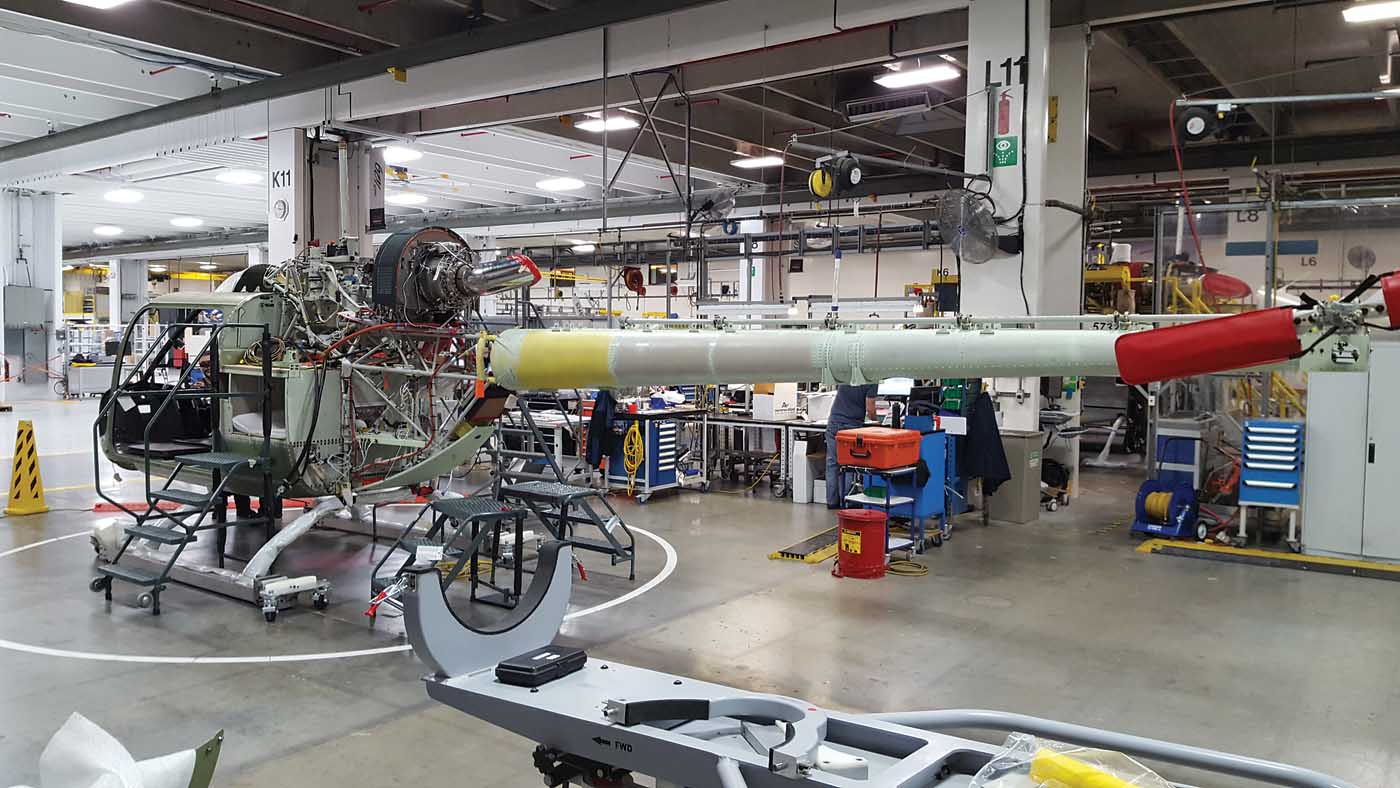
“Typically people know the site here for the assembly of the commercial products, but they might not know that the composite center is close to half the operations we do here internally,” he said.
The team now makes over 600 composite parts, ranging from vertical fins, to the 429’s cabin, to the 525’s “beany” — the disc that sits on the center of the main rotor head.
Military support
While the vast majority of Bell’s military work is completed in Texas, Canadian programs are managed in Mirabel.
In 2019, Bell began work on a major new project to upgrade and extend the operating life of the Canadian Armed Forces’ 85 CH-146 Griffons, known as the Griffon Limited Life Extension (GLLE) program. The Griffons, which entered service with the Royal Canadian Air Force (RCAF) between 1995 and 1997, provide a number of functions as a multi-purpose utility helicopter, providing tactical troop transport, reconnaissance, escort and surveillance, casualty evacuation, disaster relief, special operations aviation support, and search-and-rescue. In terms of aircraft numbers, the Griffons represent about 60 percent of the Canadian Department of National Defence’s rotary-winged fleet.
Under the GLLE program, the aircraft will receive upgraded avionics, engines, and sensor systems, with the aim of keeping the aircraft operating until at least 2031. Bell is currently in the definition phase of the program, which could ultimately be worth about $800 million. According to Francis LeBlanc, director for global fleet services at Bell, the company is working in conjunction with the Canadian government to develop a solution, with three prototypes expected within three years.

“It’ll be a new Bell 412 heavily based on the EPI/EPX model,” said LeBLanc. “It’ll be an EPI base with some of the EPX features and added military equipment, such as a defense suite, satcoms and other things.”
The company already supports the CH-146 fleet, which is spread over 10 bases, as part of a $100 million-a-year contract. This support spans program management, engineering, parts, and maintenance.
A high-profile military acquisition south of the border could also provide a huge boost to production in Mirabel; Bell’s submission for the U.S. Navy’s new helicopter trainer is the 407GXi, which received FAA certification for IFR flight (a Navy requirement) in August 2019. The Navy is expected to soon announce the award of the contract for 130 aircraft, with the entire fleet to be delivered by 2023. As commercially-based aircraft, they would be initially produced in Mirabel, before being shipped for final completion in Ozark, Alabama.
At the time of Vertical‘s visit at the end of November, Bell was clearing space in its production line to accommodate the anticipated contract award — first deliveries by the end of 2020 necessitated the advance planning, said Bachant.
“We have contingency plans to make sure when we win it, we are going to be ready to deliver,” he said.
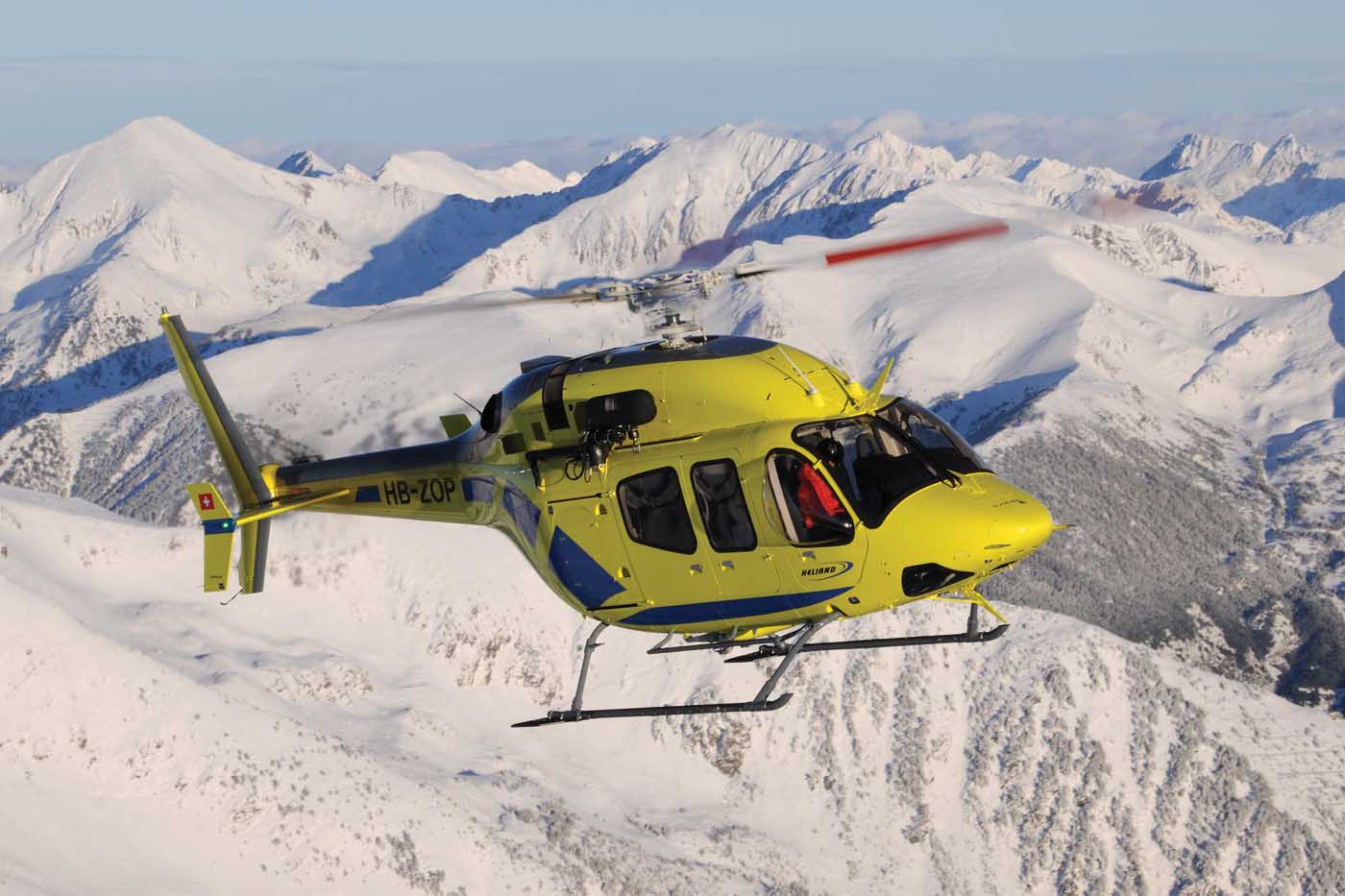
The draft request for proposals for another military rotary-wing training program — the Canadian Future Aircrew Training (FAcT) program — is due later in 2020, and Bell plans to submit the Bell 429 for this. While currently undefined, the program is likely to require more than 20 aircraft.
A focus on innovation
When Mitch Snyder unveiled the FCX-001 concept aircraft at Heli-Expo 2017 in Dallas, it wasn’t to reveal an aircraft that would be rolling off Bell’s production line any time soon — it was to give an idea of the company’s roadmap for technological development. It was also a clear announcement of Bell’s renewed focus on innovation.
The mockup at the show included a fan-driven anti-torque system, hybridized propulsion, morphing main rotor blade tips, an extensive use of glass in the fuselage, gull-wing doors, and the use of augmented reality in the cockpit to control the aircraft.
The announcement of the FCX accompanied the launch of parallel innovation teams in Mirabel and Fort Worth. The two largely work on the same projects, with the division of responsibilities driven by which location has the best match in terms of skills, capability and external funding.
The team in Mirabel has quickly grown from four to 30 people over the last three years. Based in a large open-plan mezzanine that overlooks the final assembly lines on the production floor, the team also works across two secretive labs surrounded by frosted panels (a third lab is being completed). Vertical was allowed entry to one of them during our visit. Two large islands were in the center of room; each one was topped by an unmanned technology demonstrator, with a group of workers gathered around one — Bell’s Autonomous Pod Transport (APT) multicopter — making adjustments. At the far end of the room, two 3D printing machines were busily working away; one making plastic parts, the other composites.
“They run seven days a week, 24 hours a day,” said Michel Dion, manager of innovation at Mirabel. “Here, there’s people working every day on unmanned vehicles.”
But developing unmanned aircraft is just one aspect of the extremely broad mandate for the innovation team, which takes on projects as varied as air taxis, new propulsion systems, advanced flight controls and “energy harvesting.”
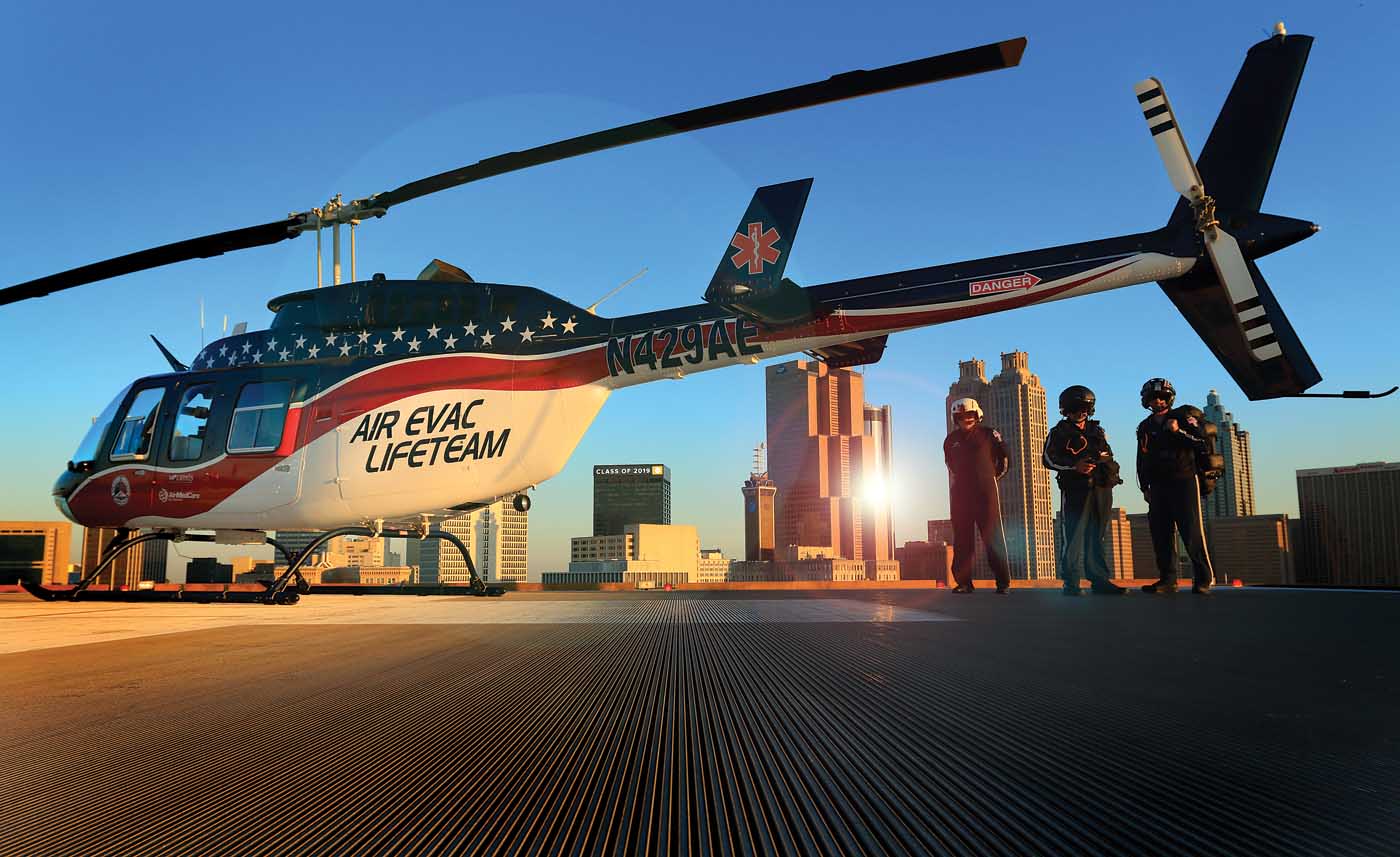
“When Mitch unveiled the FCX at HAI, he talked about six things: energy management, advanced anti-torque, advanced fly by wire, autonomous flight and situational awareness, alternate propulsion system, and morphing rotor blades,” said Dion. “So FCX basically drove the scope of the work that we do. And now we’re taking those work packages and making sure that also they can support the Nexus and APT programs.”
The development of the Nexus, Bell’s futuristic hybrid-powered air taxi, has been led by the team in Fort Worth, but the team in Mirabel has also been involved. Last year, they built a full-scale version of one of the aircraft’s six ducted fans to evaluate its aerodynamic and acoustic performance in a customized wind tunnel at the National Research Council’s aerospace facility in Ottawa, Ontario.
“If we want to have air taxis in the future being part of our transportation system, social acceptance will be key, and external noise will obviously be a part of that,” said Dion, adding that the results of the tests are still being evaluated.
The Mirabel team is also working with Nexus partner Thales on flight controls as part of a five-year government-supported technology demonstration program (TDP).
The TDP is funding various threads of research that see Bell working with 17 partners, from suppliers such as Pratt & Whitney Canada and CMC to universities and research centers. One of these threads is energy management — more specifically, Bell is looking into energy harvesting.
“When we have an aircraft that is vibrating and we’re trying to kill the vibration with [vibration control systems], we’re just basically dissipating free energy in the air,” explained Dion. “So can we go and harvest that energy back into the batteries?”
Exploration of advanced anti-torque and alternative propulsion systems is also being performed under the TDP.
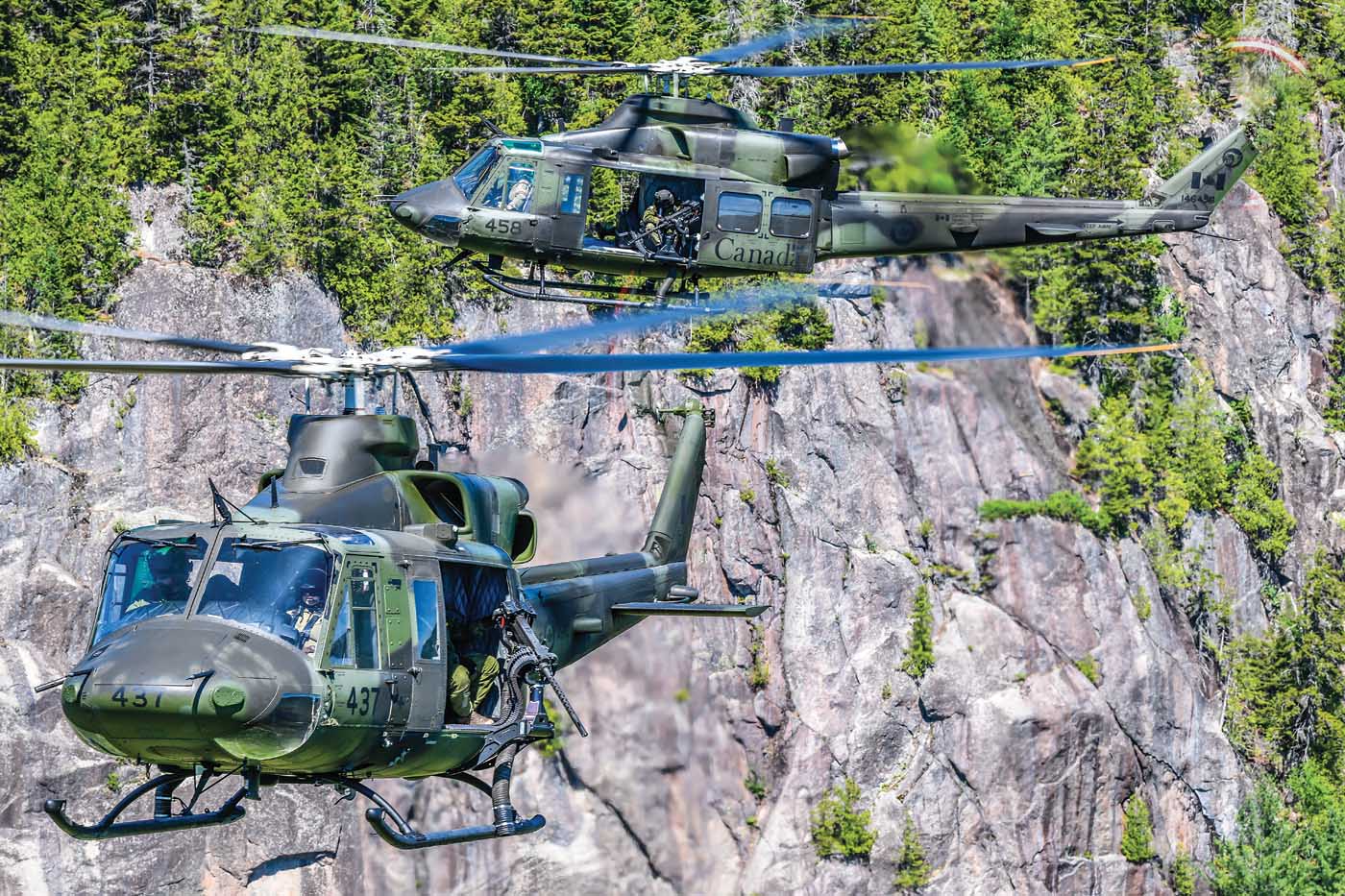
In addition to the various technology elements for larger aircraft, the Mirabel innovation team has been working on smaller unmanned programs: APT and HYDRA (Hybrid Drive Train Research Aircraft).
It has led Bell’s efforts with the latter — an electric 12-motor 55-lb. (25-kg) ring-wing aircraft designed to test and develop electric and distributed propulsion systems. Like APT, HYDRA has the ability to takeoff and land vertically, and transition to “airplane mode” for forward flight.
“We’ve been flying in high-wind conditions, just to push the aircraft to its maximum in terms of controllability, and it performed really well,” said Dion. “The testing will never be complete. It’s a research aircraft — we’ll always make updates and upgrades to it, for new technologies or to try new configurations of motors and blades.”
With such a focus on new and exciting forms of future flight, how does the team balance developing technology for conventional rotorcraft versus newer forms of vertical lift?
“We’re trying as much as possible to develop technologies in such a way that we could retrofit [them] back into a helicopter program,” said Dion. “We will continue to make helicopters into the future — there will always be missions for which the helicopter is the best solution. I think Nexus or APT are not replacing the helicopter, they’re just an addition to what exists today. They are basically two new transportation systems that we are developing.”
Supporting a global fleet
For years, Bell has prided itself on the level of its customer support and services. Its product support team sits on the second floor of its facility in Mirabel, and these rooms are staffed 24/7. “You’re not getting a voicemail and someone calls you back two days later, you should be getting somebody on the phone right away,” said Jason Moir, regional sales manager, Canada. “It’s very much a family mentality — so when customers call, they know who they are getting, [and] they’re on a first-name basis. . . . When you have that familiarity with someone, when you’re looking for information, it makes the problem that much easier to solve.”
In addition to the centrally-located expertise for customers to contact at the end of the phone, Bell has customer service engineers (CSEs) located regionally around the world.
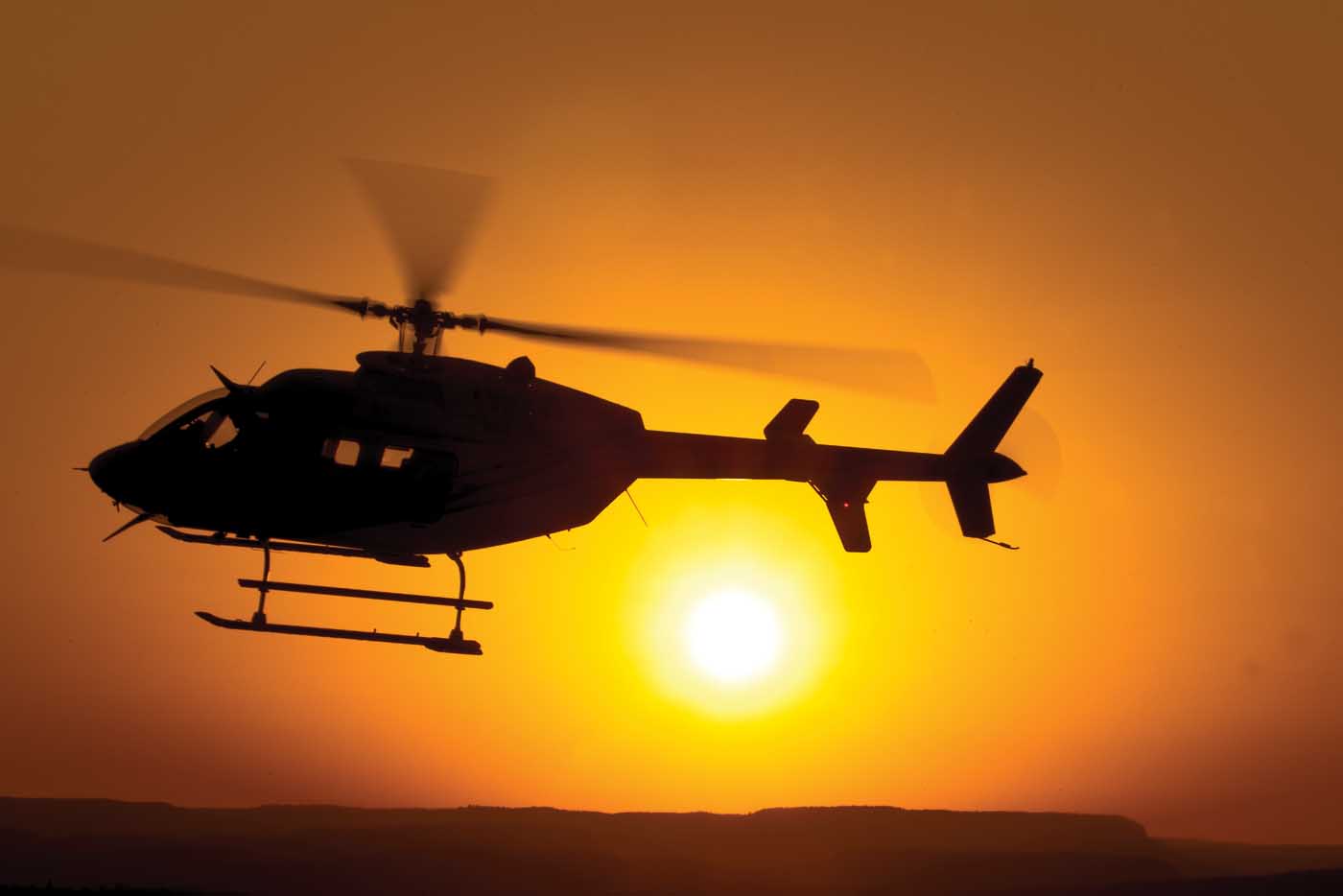
“Support and services has always been our strength,” said Moir. “The bar has been set by Bell for years in terms of industry standards. We continue to keep that mentality and focus.”
The vast experience of the customer support team is reflected throughout the facility. Although Bachant has been with Bell for almost 10 years, he said he is “considered new” in terms of longevity at Mirabel. “People tend to stay a long time — which is a good sign!” The average seniority in the plant is 21 years, he said, with many people having been there since it opened its doors in 1986. This number is trending down, however, as the staff numbers begin to grow with new hires.
Today, there are about 1,200 employees at the plant, following a hiring surge in 2019. Lavoie said he expects that to continue into 2020, at a rate of about 15 to 20 percent.
A growth in demand is fueling the need for this, he added. “The demand is picking up on many models,” he said, highlighting the 407 and 429 in particular, with Asia and the U.S. driving this trend.
With that in mind, Bell has accelerated the 407 and 429 production lines, and plans to build 70 407s and 40 429s in 2020.
In an aerospace hub like the Montreal region, Bell is somewhat spoiled in terms of the resources at its fingertips, with nearby schools and universities producing aerospace specialists, and a huge pool of existing aviation specialists working at neighboring companies such as Bombardier, Pratt & Whitney Canada, CAE, Rolls-Royce and Thales. But it also means Bell has serious competition for talent.
Over the coming years, Lavoie hopes to increase Bell’s brand awareness within the region and across Canada to highlight the capabilities and achievements of the Mirabel facility.
“We are in the process of launching a marketing plan to rebrand and reintroduce Bell to the Canadian and Quebec market,” said Lavoie. “The history of Bell Mirabel is not well known by the average population, and this is something we are working on.”
As well as potentially opening up new business opportunities, he said it would also be useful in helping to attract new talent. The facility’s appeal will be enhanced with the potential addition of new products that will guarantee its success into the future.
In a speech at the Canadian Aerospace Summit in Ottawa, Ontario, in November 2016 — just over a year after he became Bell’s president, Snyder said Mirabel would be the base for flight test, certification and final assembly for Bell’s “next new commercial helicopter program.”
Lavoie said the strong working relationship the company had built with Transport Canada, having now certified several aircraft with the agency over the years, is part of the appeal for attracting future work from its parent company. And the facility’s broad range of capabilities and expertise make him confident of future growth at the company.
“We are very capable and we have a wide range of skillsets here that makes it attractive for Bell to bring new products to Mirabel,” he said. “We are rethinking the future of vertical lift, and the role of Mirabel is very present in this.”





